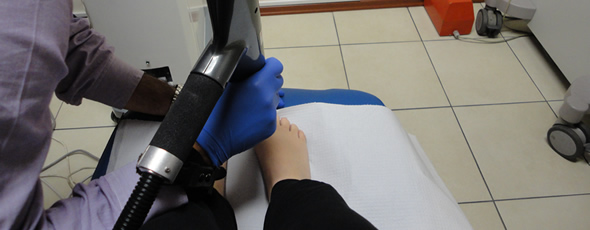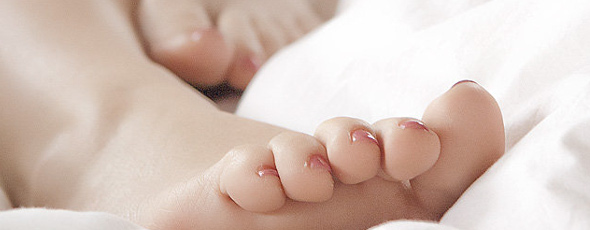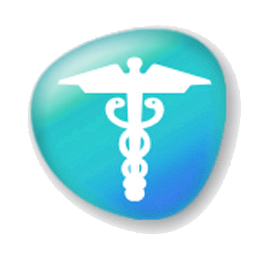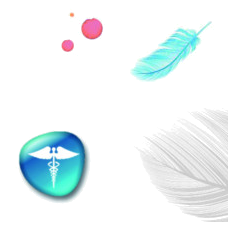What is onychomycosis?
Fungal infection of the nails is described under the general term onychomycosis. As for the responsible fungus, dermatophytes (Trichophyto Rubrum) and Candida species are most often identified. The condition mainly affects adults, however, the number of cases of onychomycosis in childhood seems to increase every year (especially in children with immunosuppression, diabetes mellitus or those who tend to put their fingers in their mouths). The toenails are most commonly affected, although in children younger than 7 years of age the fingernails are the ones with the highest rate of involvement. Onychomycosis must be treated immediately because otherwise it will spread affecting all the nails, but mainly because the affected nail is a gateway for microbes to enter the body which can cause serious problems such as erysipelas.
Do we need any laboratory tests before starting treatment?
The mycological test, which will confirm the presence of mycosis, should in any case precede the treatment. This way we will avoid the unnecessary administration of oral antifungal drugs and if we decide to administer them we will also have a sensitivity test to know which is the most suitable drug for the case. Also knowing the type of fungus we can predict whether it will respond to laser treatment or not. We must not overlook that there are dermatological diseases such as psoriasis, alopecia areata, eczema and congenital onychodystrophy with a clinical picture similar to onychomycosis, so a differential diagnosis must be made from them.
Classic onychomycosis treatments
Topically applied medicated nail lacquers (cyclopyroxolamine, amorolfine) are applied in initial situations where the nail matrix is not affected and are made with topical antifungal products. Most of the time they are not enough because the fungus is also deep in the matrix and the nail bed, i.e. under the nail. A combination of topical and systemic treatment is necessary if the nail is more affected by 50% or its matrix is affected. Then the nail is cleaned, a topical antifungal is applied, and oral therapy is given. The medicine (itraconazole, terbinafine, fluconazole) in the form of a pill or syrup must be administered orally so that it can reach the uterine area and indeed for a long period of 4-6 months (due to the slow rate of nail growth) . The problem is that patients with liver or kidney disease may be significantly burdened by such a long-term treatment. Oral drug therapy is also not approved for the treatment of onychomycosis in children.
Finally, let us mention that some mistakenly believe that in onychomycosis, if they surgically remove the nail, the new one will emerge healthy, which is not the case and they undergo a traumatic procedure unnecessarily.
The evolution in the treatment of onychomycosis with the use of a special laser
Today we have the possibility to use a specialized laser for the treatment of onychomycosis and especially those caused by T. Rubrum. This is Q-Switched NdYAG 1064/532 nm which has very good penetration through the nail, so it treats the fungus that is under the nail without causing damage to the nail surface or the periungual (the skin around the nail ). It is a drug-free (non-toxic) treatment that can be applied to all skin types-colors. The treatment is painless and does not even require local anesthesia. It only takes 15-20 minutes and the patient resumes his activities immediately after. Usually 2-3 sessions are required which are done per month. After treatment we do not expect the nail to clear immediately (even if the fungus has been successfully treated). The treatment is considered successful when we see the new nail that is growing is healthy. Today we also have scientific documentation of the effectiveness of laser treatment of onychomycosis according to a publication by Dr. Kalokasidis and his colleagues
How many laser sessions are needed?
Usually 3 sessions are needed. The first two are one month apart and the second and third are 2 months apart. However, there are also special cases such as patients with severe immunosuppression or patients with diabetes or frequent nail injuries where we will need more sessions
What are the chances of recurrence of onychomycosis after treatment with laser;
The chances of recurrence of onychomycosis after any successful treatment are quite high. This is mainly due to the fact that some aggravating predisposing factors of the patient's daily life have not been removed. It is important to remember that what helps the growth of fungi is moisture and elevated temperature. If we wear closed shoes and boots for a long time and often, they can make our feet hot and humid and prone to growth. Make sure to change your shoes daily and prefer canvas or leather ones to synthetic ones.
We need to let the shoes air out and dry from the sweat.
Also, don't walk with bare feet in changing rooms-gyms, because we can "stick" fungi from the hot and wet floor.
Also, people who frequently wet their hands (eg, housewives, restaurant dishwashers, cleaners) have an increased chance of getting ringworm or having frequent recurrences.
Relapse prevention measures
Sometimes onychomycosis coexists with mycosis of the skin of the soles, (dermatophytosis of the soles). Fungal infections of the skin on the foot should be treated immediately so that other parts of the body are not affected.
• We should take care of the good hygiene of the feet by drying well after the bath even with a "dryer", especially between the toes. It is also important to change socks daily and avoid synthetic socks and shoes.
• Needs special attention in nail care centers, the risk of transmission of fungi and other serious infectious and communicable diseases is real. So we must be absolutely sure that all tools are disinfected and sterilized after each use
• It is necessary to avoid a careless and traumatic manicure or pedicure by inexperienced or insufficiently trained staff, it can create injury and turn into a portal of entry for germs and a focus of infections.
• Fungus eggs continue to exist in the favorable environment of shoes. So any attempt to treat mycosis must be accompanied by sterilization of the shoes that have been used.
Is laser treatment painful?
No. Patients feel a slight "sting" sensation during the first pass with the 1064nm frequency of the Q-Switched laser and a slight "burning" sensation when we do the second pass with the 532nm frequency
Duration of the laser treatment session
The duration of the therapeutic session on one nail is 5 minutes
What should I expect after the laser application? When are the results of the treatment visible?
The nail that has been destroyed by the fungus is not possible to come back and turn into a healthy nail. What we expect is to see a new healthy nail grow from the nail matrix, which as it grows pushes the diseased nail forward. So we gradually cut and remove the diseased nail and replace it with the new healthy one. For the complete renewal of the fingernail, about 6 months are required, while for the toenail, about twice as long.
What should we avoid after applying the laser treatment?
There is practically no limitation. The patient immediately returns to his activities and work. It is good to follow the instructions to avoid recurrence of onychomycosis
Are all lasers for the treatment of onychomycosis effective?
No. We need to know if the Laser they recommend has approval and certification for the specific job. In our clinic we use the Q-Clear laser from the American company LightAge, which is FDA and CE approved for this specific application and with which we did the clinical study we published.
"Today we have the possibility for an innovative treatment. This innovative treatment with the Qclear laser of the American company Lightage is a treatment that is certified by the FDA for the safety and effectiveness of the treatment. It is a solution which is easy, without taking drugs and without any pain for the patient. We can use the laser to pass under the nail where the fungus lives in the matrix of the nail, in the area where the new nail is produced and eliminate the fungus colonies. 2 to 3 sessions are required which take place over a period of one month and are also very effective. Of course, the result will take a while to be seen, because it takes 6 months to completely renew the fingernail and 12 for the toenail. But from the very first session we see a nail that grows strong and healthy."
[gravityform id=”4″ name=”More Info” title=”false” ajax=”true”][/tab]





